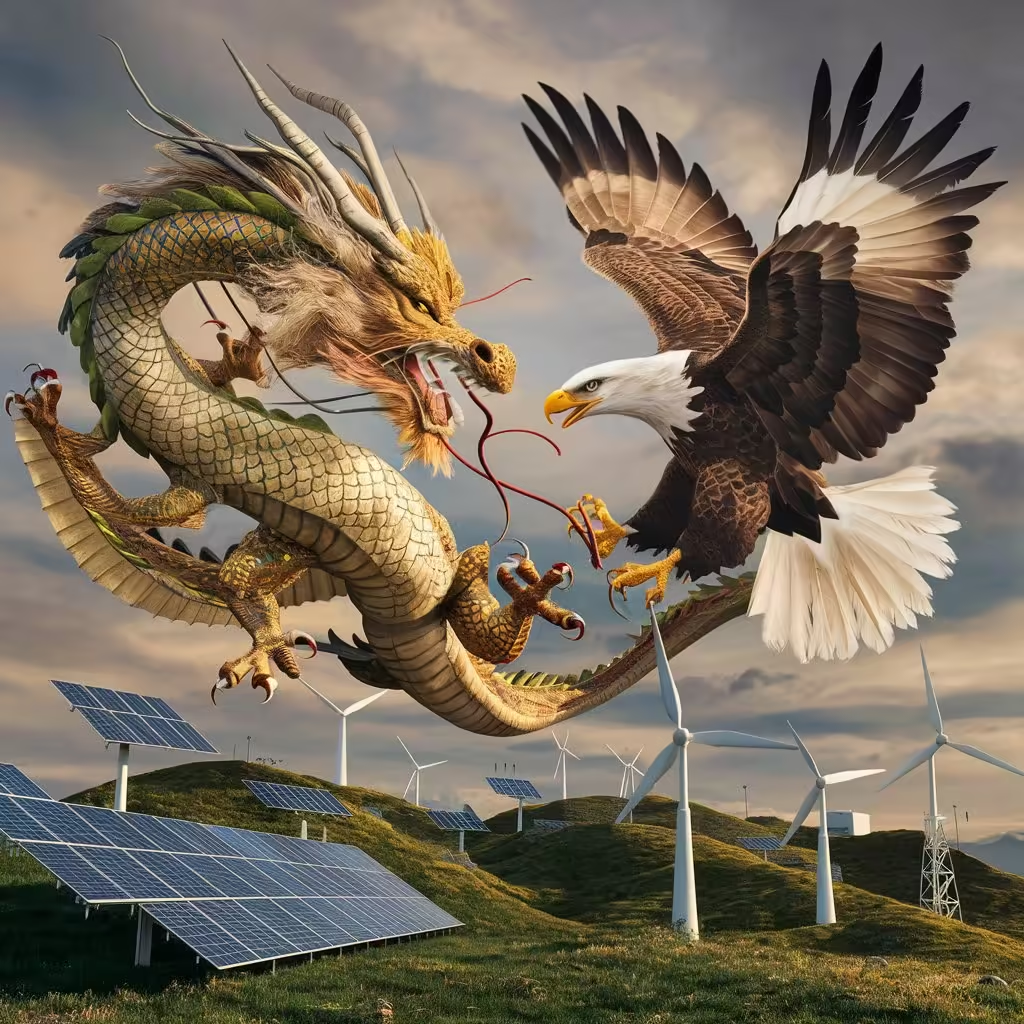Physical Address
304 North Cardinal St.
Dorchester Center, MA 02124
Physical Address
304 North Cardinal St.
Dorchester Center, MA 02124

The race for dominance in the electric vehicle (EV) market has become a central battleground in the ongoing economic and technological rivalry between the United States and China. This competition is not only about which country can produce more EVs but also about who can lead in innovation, market share, and influence over global standards and supply chains.
China has emerged as a formidable player in the EV market, leveraging several key advantages:
1. Government Support: The Chinese government has heavily subsidized the EV industry, providing incentives for manufacturers and consumers alike. This has helped to rapidly scale production and adoption of electric vehicles.
2. Supply Chain Control: China dominates the global supply chain for EV batteries, which are crucial components of electric vehicles. The country controls a significant portion of the world’s lithium-ion battery production and has invested in securing raw materials through mining and processing.
3. Market Size: China’s domestic market for EVs is the largest in the world. The sheer volume of potential consumers allows Chinese companies to achieve economies of scale, reducing costs and increasing competitiveness.
4. Technological Innovation: Chinese companies like BYD, NIO, and Xpeng have made significant strides in EV technology, including advancements in battery technology, autonomous driving, and vehicle connectivity.
The United States, recognizing the strategic importance of the EV market, has begun to respond with its own initiatives:
1. Policy Initiatives: The Biden administration has introduced policies aimed at boosting the EV industry, including tax incentives for consumers and funding for charging infrastructure. The Inflation Reduction Act, for example, includes significant investments in EV technology and infrastructure.
2. Reshoring Supply Chains: To reduce dependency on China, the US is investing in domestic battery production and securing supply chains for critical minerals. This includes supporting new mining projects and recycling initiatives.
3. Private Sector Innovation: American companies like Tesla, Rivian, and Lucid Motors are leading in innovation and production. Tesla, in particular, has set global standards in EV performance and has expanded its manufacturing footprint in the US and beyond.
4. Strategic Alliances: The US is forming strategic alliances with other countries to create a diversified and secure supply chain for EV components. Collaborations with countries like Canada, Australia, and those in the European Union are part of this strategy.
1. Battery Technology: Control over battery technology and production is crucial. While China currently leads, the US is making significant investments to catch up, including partnerships between American companies and foreign battery manufacturers.
2. Charging Infrastructure: Building a comprehensive and reliable charging infrastructure is essential for EV adoption. Both countries are investing heavily in this area, with the US focusing on creating a nationwide network of fast-charging stations.
3. Standards and Regulations: Dominance in setting global standards for EV technology and safety regulations is a key strategic objective. The US and China are both pushing their standards in international forums, which could shape the future of the global EV market.
4. Innovation Ecosystem: The broader innovation ecosystem, including advancements in AI, autonomous driving, and connectivity, is another battleground. Both countries are investing in R&D to gain a technological edge.
The battle for dominance in the EV market between the US and China is more than just an economic competition; it is a strategic contest with far-reaching implications for global power dynamics. Both countries are leveraging their strengths to gain an advantage, and the outcome of this battle will likely shape the future of the automotive industry and global technological leadership. As the race intensifies, the world will be watching closely to see who emerges as the leader in the next generation of transportation.